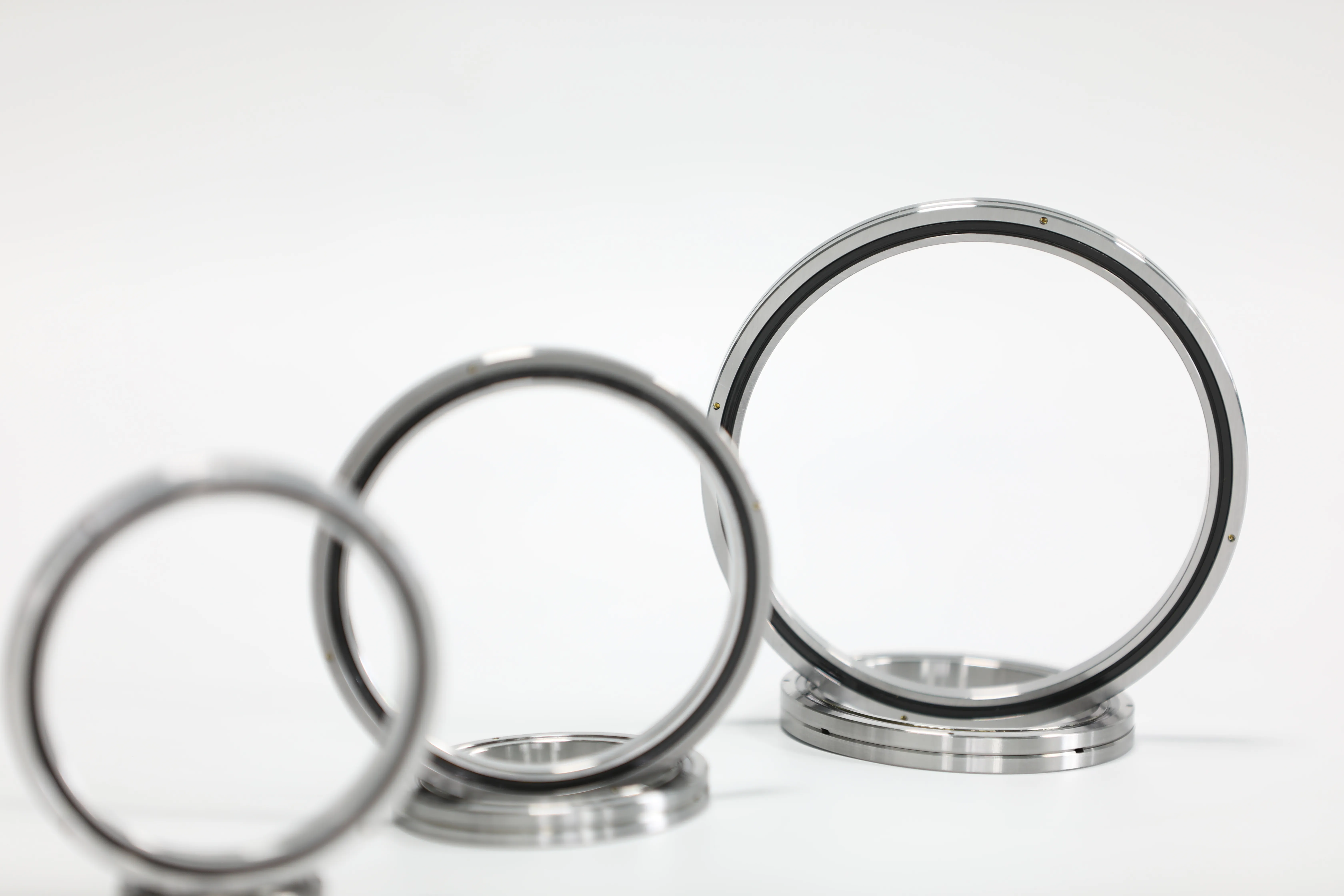time:May 20, 2024 source:Luoyang AVE Precision Bearing Co., Ltd.
Improving the installation accuracy of cross roller bearings is crucial for ensuring their optimal performance, longevity, and reliability. Here are detailed steps and best practices to enhance installation accuracy:

1.1. Cleanliness:
Ensure a clean working environment to prevent contamination.
Clean the bearing, housing, and shaft thoroughly before installation.
1.2. Tools and Equipment:
Use the correct tools and equipment, including precision measuring instruments like micrometers and dial indicators.
Avoid using makeshift tools that can damage the bearing or components.
1.3. Check Components:
Inspect the bearing, housing, and shaft for any signs of damage or defects.
Verify the dimensions and tolerances of the bearing, housing, and shaft against the manufacturer’s specifications.
2.1. Align the Shaft and Housing:
Ensure that the shaft and housing are correctly aligned. Misalignment can lead to uneven load distribution and premature bearing failure.
Use alignment tools and techniques to achieve precise alignment.
2.2. Centering the Bearing:
Center the bearing in the housing and on the shaft. This can be done using centering sleeves or other alignment aids.
Ensure the bearing sits squarely in the housing to avoid tilting or skewing.

3.1. Press Fit Method:
For bearings requiring a press fit, apply even pressure to avoid misalignment.
Use a press tool that matches the bearing dimensions and apply pressure to the correct ring (inner or outer) to prevent damage.
3.2. Thermal Expansion Method:
Utilize thermal expansion techniques, such as heating the housing or cooling the shaft, to facilitate easier installation without excessive force.
Ensure the temperature is controlled and within the bearing manufacturer’s recommendations.
3.3. Tightening Sequence:
Follow a cross-tightening sequence when installing bolts or screws to ensure even pressure distribution.
Tighten bolts gradually and evenly in small increments to avoid distortion.
4.1. Radial and Axial Runout:
Measure the radial and axial runout using dial indicators to ensure the bearing is properly aligned.
Correct any runout deviations by adjusting the bearing or components.
4.2. Preload and Clearance:
Set the correct preload or clearance as specified by the manufacturer. Improper preload can lead to excessive heat and wear.
Use shims or adjustment nuts to fine-tune the preload or clearance.
5.1. Proper Lubrication:
Apply the appropriate type and amount of lubricant as specified by the bearing manufacturer.
Ensure the lubricant is clean and free from contaminants.
5.2. Lubrication Path:
Verify that the lubrication paths are clear and that the lubricant reaches all necessary areas of the bearing.

6.1. Rotational Smoothness:
Rotate the bearing manually to check for smooth operation. Any roughness or binding indicates a potential issue.
Listen for abnormal noises that might suggest misalignment or contamination.
6.2. Load Testing:
If possible, perform a light load test to verify the bearing operates correctly under initial conditions.
Gradually increase the load while monitoring the bearing’s performance.
7.1. Document Installation:
Record all measurements, alignment settings, and procedures used during installation.
Keep a record of any adjustments made for future reference.
7.2. Ongoing Monitoring:
Implement a regular maintenance and inspection schedule to monitor the bearing’s condition.
Use condition monitoring techniques, such as vibration analysis, to detect early signs of issues.
By following these detailed steps and best practices, you can significantly improve the installation accuracy of crossed roller bearings, leading to enhanced performance, reliability, and longevity of the bearing in its application.
Yiyang Advanced Manufacturing Development Zone, Luoyang City, Henan Province, China.
mark.hu@avebearing.com avebearing01@163.com
+86 15036588800